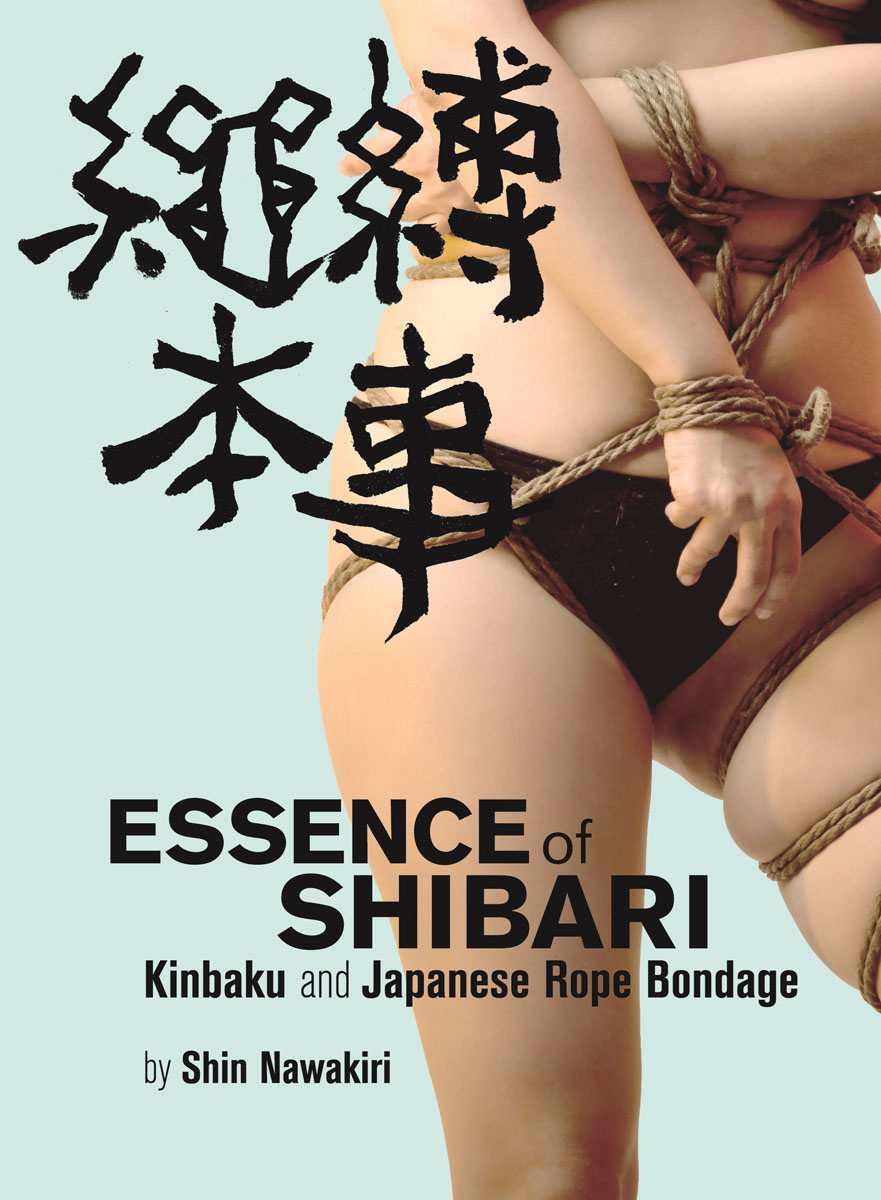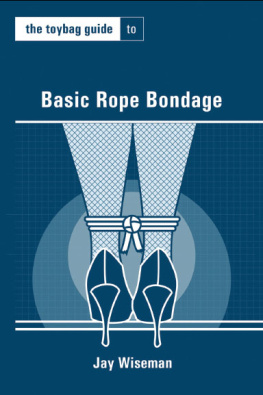

Notice
Personal responsibility is a basic tenet of adult activity. Like any adult activity, rope bondage inherently contains risk of both physical and emotional injury. Any information or safety guidelines provided in this book are solely suggestions on ways to help reduce these inherent risks. By deciding to engage in any adult activity, including those detailed in this book, you are taking on physical and emotional responsibility for your own actions, and agree to hold harmless all individuals associated with the creation, publication and sale of this book.
Essence of Shibari: Kinbaku and Japanese Rope Bondage
by Shin Nawakiri
2017 English Edition Mystic Productions Press
2013 G Books Taiwan
All rights reserved. With the exception of brief excerpts for reviews, no part of this publication may be reproduced or transmitted in any form or by any means, electronic or mechanical, including photocopying, recording, or any other information storage and retrieval system, without the written permission of the publisher, author, artist, or their estates.
Original text and rope work by Shin Nawakiri
http://bittersweet.asia/
Photography by Piez Jeng
http://piezphoto.com/
Forward by Nawashi Kanna
http://nawashikanna78.blog136.fc2.com/
Translated and Edited by David Z. and Lee Harrington
http://www.PassionAndSoul.com
English Edition layout and cover by Rob River
www.RobRiver.com
ISBN 978-1-942733-85-0
Ebooks: MOBI ISBN 978-1-942733-86-7
ePub ISBN 978-1-942733-87-4
PDF ISBN 978-1-942733-88-1
Collectors Edition ISBN 978-1-942733-89-8
Previous/Chinese Language 978-986-6474-45-3
Foreword

Several years ago I met the author of this book. I still remember the moment when he first came to me to study kinbaku, and his persistent enthusiasm. When Kanna Ichi-mon (the Kanna school of kinbaku) was established, Shin Nawakiri joined us at my invitation. He improved his kinbaku skills, and his skill level was very good even compared to those in Japan.
Although I have not reunited with the author in the past few years, when I see his kinbaku work on the internet, I reminisce over those past days of us together, and feel very happy that his kinbaku level has further advanced to a higher level.
Now, as I hear about his upcoming publication of this book, I am also filled with anticipation, and very much hope that all those who will read this book will learn kinbaku in a safe and joyful way.
Nawashi Kanna
Editor and Translators Notes
It has been an honor to get a chance to bring Shin Nawakiris book, Essence of Shibari: Kinbaku and Japanese Rope Bondage, to an English-speaking audience. Ever since I saw the book, I knew it was something special, and set upon an almost two year quest into making it happen.
This book offered unique challenges in that it was written in Chinese, by an author from Taiwan, about a topic (and teachings) originating from Japan. The author cited works from teachers that speak English, Italian, and Spanish providing additional hoops for confirming correct translation of their quotes. We chose to list all of the above languages in English for the book: Japanese-language concepts that were listed in romaji (roman letters) with translations listed as [translation] after them; and Chinese-language specific terms listed as the English translation followed by the original Chinese characters.
Another choice we debated were the words kinbaku and shibari. In Chinese, these words get used interchangeably, as was the case in classical magazines such as Kitan Club from the 1950s. In current English vernacular, shibari often gets used to refer to Westernized Japanese aesthetic ropework, while kinbaku is used for Japanese work done in Japan. However, both terms are used in Japan at this time. We have chosen to use both terms interchangeably in the early parts of this book, shifting later in the book to kinbaku to reference the style and tool, and shibari to reference specific ties.
One of the reasons that Nawakiris book was specifically of interest to us at Mystic Productions Press was that it features both male and female bodies being bound. That is not the case in the work of all authors, who tend to feature a specific aesthetic of the female body. When a he or she is referenced in this book, it is referring to the gender of the person in the images, not a tie being limited to a specific gender. Though the book features Taiwanese models, these ties can all be modified for diverse bodies, and Nawakiri says that no reader needs to feel excluded from the ties, even if not all body types are directly shown.
The original text features a number of Taiwanese-specific references. Some have been kept for interest of the reader, while others have been modified with author permission to open the topics to a Western audience. Some safety ties have also been expanded for awareness that may have been previously understood by his original audience.
In doing all of this play, please remember that one of the basic tenets of shibari is that it requires active informed consent between adults. This includes awareness of personal safety and discussing the needs, wants, and desires of all parties. It is wonderful to have a rich text like this one to share, but understand that all ideas, techniques, and notes on safety and technique are from but one perspective, and there are others out there. We encourage readers do their own research and look into other works, as well.
We hope that you will enjoy this work as much as we do, and dive into the beautiful world of kinbaku with Shin Nawakiri as your guide.
Yours in rope and joy,
David Z. and
Lee Harrington
TABLE OF CONTETS
Some people see kinbaku as a beautiful and cruel expression of sexual desire, while others see it as a refined performance art. Whichever view you may hold, kinbaku also known as shibari has become a symbol of Japanese SM.
Since the Second World War, BDSM communities in the West have explored and defined concepts such as Dominant, submissive, Top, bottom, and other related terminology. By doing so, they have established a foundation for the long-term development of a BDSM subculture. However, in Japan, there seems to be a lack of this kind of social movement. Fans of SM explore this aspect of their sexuality through videos and books, as well as through watching bakushi [rope bondage masters, teachers, or artists] talk about their profession, their experiences in the SM lifestyle, and their understanding of roles of SM practitioners. Accordingly, bakushi have played a very influential part in the forming of Japanese SM subculture.
Kinbaku has also become popular among BDSM circles in the West since the turn of the century. Aficionados from all over the world have formed interest and practice groups, and some have made pilgrimages to Japan to study this art. Well-known bakushi have become international celebrities. Meanwhile, BDSM circles in the West have continued their longstanding tradition of sharing and publicizing knowledge. The flourishing community-based kink culture has established an efficient network to share knowledge on shibari.
Next page












